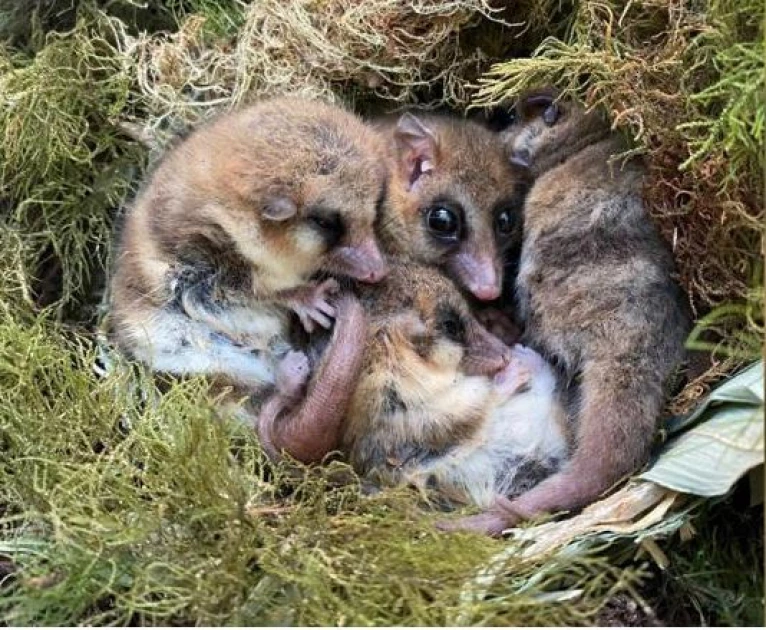This tiny creature could help humans figure out long-haul space travel

Monitos (Dromiciops gliroides) hibernate together in a nest. PHOTO/COURTESY: CNN
The monito del monte, an endearing mouselike
creature that lives in the forests of Patagonia, races vertically up trees,
covering a meter of bark per second, to feast on insects and summer fruits
ripening high in the canopy.
But it's the monito's ability to slow down
its bodily functions to survive the region's harsh winters that has fascinated
scientists, such as biologist Roberto Nespolo, a professor who studies animal
metabolism at the Austral University of Chile.
Once the weather turns cold, the bug-eyed
monito builds a mossy nest in a tree hollow. Cozying up with four to eight
fellow monitos, it settles in for the winter.
There, the tiny marsupial enters what Nespolo
described as a deathlike torpor, and its heart rate drops from 200 beats per
minute down to 2 or 3 beats per minute. In this inactive state, it conserves
energy, only taking a breath every three minutes.
"I got interested (in the monito)
because of the amazing capacity of this marsupial to reduce (its) metabolism
and save about 95 percent of energy during torpor," said Nespolo via
email.
His work is featured in the new CNN Original
Series "Patagonia: Life on the Edge of the World."
"That's what we measured ... in the
laboratory. Now we could replicate those measurement(s) in the wild, and found
that this capacity is even greater. Monitos could hibernate at zero degrees
(Celsius), without any harm to their tissues!"
Nespolo has made it his life's work to
understand how these diminutive creatures of South America's southwestern tip
pull off this feat, something that could help us better understand human
metabolism and perhaps even help us come up with solutions for long-haul space
travel.
Space agencies say that if humans want to
make it to Mars, figuring out how to induce hibernation in astronauts could be
the best way to save mission costs, reduce the size of spacecraft and keep crew
healthy.
"Natural hibernators have a number of
physiological adaptations that permit them to almost stop metabolism, without
injuries, and to wake up weeks later perfectly," he said.
"So many colleagues are seeking to
identify those mechanisms to be applied either for potential human hibernation,
or also for medical applications such as organ preservation."
The monito is a zoological curiosity in more
ways than one.
Like kangaroos and koalas, it's a marsupial
that raises its young in pouches. However, the monito is more closely related
to its Australian brethren than other marsupials, such as opossums, that live
in the Americas -- something that's long puzzled scientists.
Scientists consider the two species of monito
(Dromiciops gliroides and D. bozinovici) to essentially be living fossils --
part of a lineage called Microbiotheria that's ancestral to Australian and
American marsupials, making them the sole living representative of an animal
group long thought extinct.
As a "relict species," the monito
acts as a window into the past that can help scientists understand how they
have survived for so long, Nespolo's research has suggested.
The temperate forest habitat where the monito
lives is shrinking, but Nespolo is confident that the tiny creature, whose
direct ancestors once roamed Earth's ancient supercontinent Gondwanaland, will
continue to thrive.
"I'm hopeful for the monito because
they're very resilient. They are able to adapt to change as long as their
habitat still exists," Nespolo said in the CNN Original Series.
Want to send us a story? SMS to 25170 or WhatsApp 0743570000 or Submit on Citizen Digital or email wananchi@royalmedia.co.ke
Comments
No comments yet.


Leave a Comment